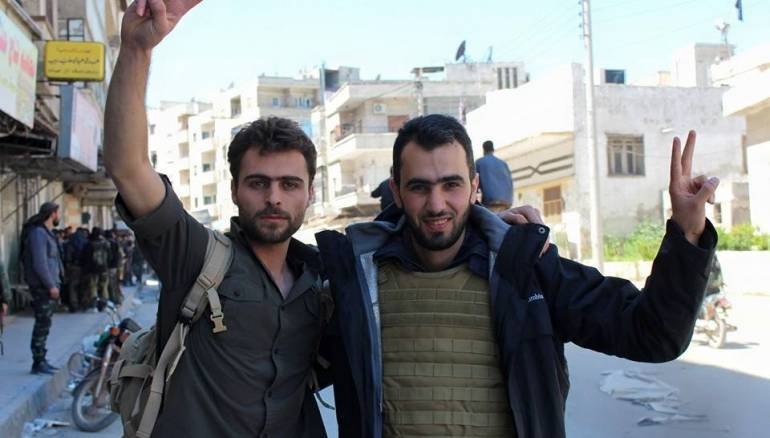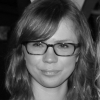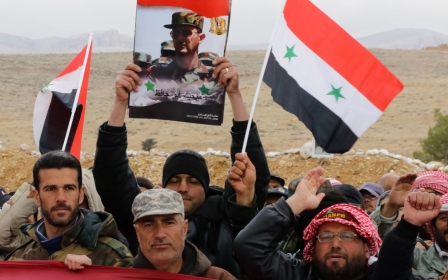The West loves IS propaganda. We should listen to Syria’s real journalists instead

There is one picture of Syria that I have seen too many times. It is not of the mighty 13th-century citadel of Aleppo. It is not of the bottle green forests sweeping down to the Mediterranean at Latakia. It is of a black-clad fighter, with the Islamic State flag in one hand and AK-47 in the other. He marches down a street of non-descript apartment blocks in what is believed to be the northern city of Raqqa. His brown leather sandals slap on the tarmac, with a small boy looking towards the camera in the background.
For all our condemnation of their barbaric executions and terror attacks, we cannot get enough of IS, the Islamic State of Iraq and Sham. Worldwide, there are around five million Google searches a month for the term “Isis” – and that doesn’t even include all the variations: Daesh, Islamic State, Isil, and so on.
We love the chilling thrill of pictures showing executions and military training exercises, black flags rippling under the swelter of the Fertile Crescent. That image of Raqqa is just one of the thousands – probably millions – of photos that depict IS activities. It is absolutely right that journalists, activists and analysts document them. What is not is our obsession with them.
Whenever the group claims an attack in Europe (less so when elsewhere, since we do not seem to care about them so much), the West offers IS the fame it craves. Mug shots of the alleged terror perpetrators are republished ad infinitum. For example, there are reams of Google results on Najim Laachraoui and Brahim Abdeslam, among the bombers in Brussels and Paris. City centres go into shut down. Social media creates a virtual state of emergency, allowing users to “check in” to publicise their safety.
The Turkish prime minister suggested that IS was behind the atrocious attack on Istanbul’s Ataturk airport that left 43 people dead this week. The group’s more-than-15 minutes of fame may run on.
IS “martyrs” are convinced that they die in honour. In a twisted fashion, they do.
Like the most seasoned PRs and lobbyists, IS know that journalists and politicians can be fed messages by providing statements, high-quality pictures and film. And so they do. The group runs a media channel, al-Furqan, producing videos in multiple languages; it has a dedicated spokesperson, Abu Mohammed al-Adnani; it publishes hundreds of professional quality photographs.
A recent Brookings Institution paper on combatting IS propaganda said: “The humiliating subjugation of infidels, the public display of beheadings, the destruction of idols, and the display of state-like qualities such as currency and passports all suggest power, permanency and victory.”
What fame and glory executioners and suicide bombers win! They kill scores of kuffar (unbelievers) and become political and media sensations at the same time.
When IS released a video threatening the UK earlier this year, Prime Minister David Cameron gave it the dignity of a response, describing it as a group that commits “the most utterly despicable and ghastly acts”… “People can see that again today.” Yes, they could – his words were another incentive for us journalists write more words, and publish more pictures.
Politicians like to talk about deterring IS attackers: no diplomacy is required. They like to talk about “cracking down” on their sympathisers. Terrorism distracts from other issues they like to keep quiet about: cosy relations with Egypt and Saudi Arabia and disability benefits cuts to name but a few.
But there is an alternative to endless, unwitting IS propaganda.
Khaled al-Issa and Hadi al-Abdallah
Syrians this week mourned a journalist who had documented some of the worst violence in Syria, often committed by the regime and its allies.
Khaled al-Issa passed away last Friday night. He was just 24 years old.
The photographer and cameraman died from severe head injuries inflicted by an improvised explosive device (IED) near the apartment in Aleppo he shared with colleague Hadi al-Abdallah. Friends and activists believe it was an assassination, although no group has claimed responsibility. He had been rushed across the border into Turkey for medical care and was awaiting evacuation to Germany after an emergency campaign to obtain him a visa. Hadi is still alive and receiving treatment.
Khaled had spent the past four years travelling to scenes of barrel bomb attacks, airstrikes and gunfire exchanges to show the world what the numbers tell us too: the vast majority of civilians killed in Syria are victims of the government.
Last month, in the early days of Ramadan, Khaled accompanied Hadi in Aleppo, reporting on the regime’s good spirits as it pelted the city with day after day of air strikes. His images and videos documented the injuries sustained by civilians who survived. At least 172 men, women and children were not so lucky, in the first nine days of the holy month alone.
“We are not able to cover all the killings”, Khaled once explained. “We go out to film what’s happening only in the daytime and at night we rest […] so no one sees the crimes that take place at night. We need a thousand, or actually thousands, of reporters to expose the situation and all the crimes carried out in Aleppo.”
He also documented the black humour of the banners, in English, produced in his notoriously rebellious hometown of Kafrnabel in Idlib province. They carry messages such as "Obama has proved his ineptitude to act like US president, so he transferred his shame to his US successor."
For his funeral, thousands of the town’s residents took to the streets bearing more posters. He was buried surrounded by friends and family.
Khaled also showed parts of life in Syria highlighting how – what a surprise! – most of its people are normal, and not knife-brandishing lunatics. These are not sexy bad news stories – but they are crucial in building the Syria that our children will see in the future.
Do we want future generations to believe that IS was the only thing ever to flourish in Syria? Do we want them to overshadow artists such as Nizar Qabbani, revered throughout the Arab world for his love poetry? The extraordinary waterwheels – norias – of Hama, built during the Roman and Byzantine eras? The country’s Christians, and their monasteries of Ma’loula and Saidnaya? And, more recently, the towns such as Kafrnabel, wryly defiant as ever? The volunteer defence workers who risk their lives every day – filmed by people such as Khaled – to rescue civilians from piles of rubble? The children educated in underground schools, the safest places to learn the ABC in bombed-out areas?
Instead of talking incessantly about IS, offering them the fame they seek, we should give more time to Syria as it was and is.
We should show more of work like Khaled's. His passing will leave a gap in what we know about this war, and how our children see it, and perhaps, even, one day, who is held accountable. We should remember people like him, not the soldiers seeking glory on the streets of Raqqa.
- Lizzie Porter is a freelance foreign news and features journalist with a focus on the Middle East and North Africa. She has special interests in heritage, displaced populations, and women's and social issues. You can follow her on Twitter: @lcmporter
The views expressed in this article belong to the author and do not necessarily reflect the editorial policy of Middle East Eye.
Photo: Syrian journalist Khaled al-Issa and Hadi al-Abdallah posing for the camera (Facebook).
This article is available in French on Middle East Eye French edition.
Middle East Eye propose une couverture et une analyse indépendantes et incomparables du Moyen-Orient, de l’Afrique du Nord et d’autres régions du monde. Pour en savoir plus sur la reprise de ce contenu et les frais qui s’appliquent, veuillez remplir ce formulaire [en anglais]. Pour en savoir plus sur MEE, cliquez ici [en anglais].





